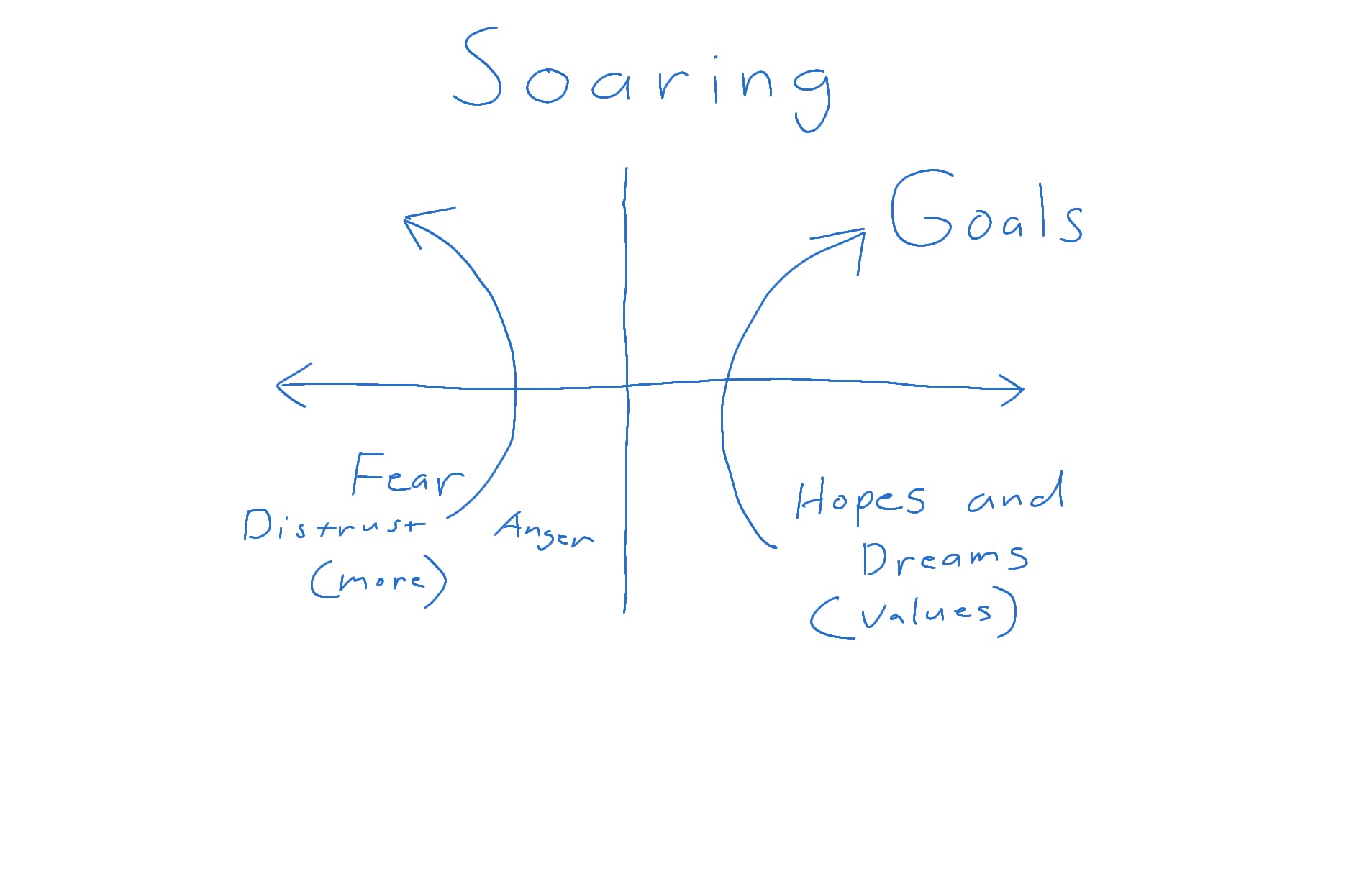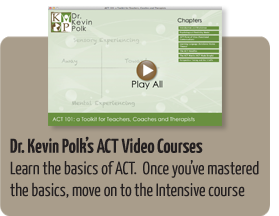As much as anything, the ACT Matrix is about setting things up so that people can soar. In many work and education places that’s not how things are going. Heck, I’m pretty sure that in most places things are set up to hold everyone back. The innate sense of adventure and discovery passed down through time to each of us is squandered. Rather than being built up to soar we are instead beat down to mediocrity, or worse, failure.
Setting things up so people can soar is really not that hard. However, like many things in life, you really do need to know the basic steps in the process. Many people just go blindly into a Values and Goals exercise and get bad results.
Step One: Get some values from your audience. A value is something you can move toward forever, like family, friends, education and work. If you are using the matrix, then you (or the person) writes the values in the lower right. A dream is like a value, but you might reach a dream. Nevertheless, the lower right quadrant is a nice spot for dreams on the matrix.
Step Two: Get some goals from you audience that will move them toward the values. Calling a friend, visiting family, going to class, and participating at work are all goals that can move one toward values. In the matrix these go in the upper right. Same goes for actions toward dreams.
Step Three: Build upon the Values and Goals. My favorite response to anyone’s vision, dream, value or goal is a hardy, “Cool!” Other people say, “Great” or some other word. Someone just shared a life direction with you; in my book that’s cool and worth me getting a little excited about. After the “Cool” you might say something like, “When did that dream first show up in your life? Have you done anything to move toward that dream so far? Do you already have plans, or are you just in the beginning stages?” You can say all kinds of things to expand the person’s vision and build on their ideas about what action steps they might need to take. Always remember that simply sharing the dream with you was and action step. Praise that action. You don’t have to go over the top with praise, but a little praise goes a long way when someone just shared a dream with you.
In other words, this IS NOT the time to evaluate values and goals.
This is very important! When people introduce Values and Goals there is a great temptation to judge them. To offer and opinion as to whether a value is “good” or “bad” or to look at a goal in terms of whether it’s doable or not. When people have just opened up with their hopes and dreams, build on their hopes and dreams; don’t take it as an opportunity to diss on them.
Even the slightest bit of evaluation at this stage of the process can be taken very badly by someone. They can feel judged and dismissed. As you can probably guess by now, judging (evaluating) is the biggest mistake I see people make when doing Values and Goals work with others. This is hard for many of us because we think we know what’s best for others. When it comes to soaring, the person learns by doing, not by getting other people’s opinions.
Step Four: Invite people to identify internal barriers that might show up and get in the way of moving toward their values and goals. Fear, distrust, anger and more show up in all of us and get in the way of the soaring. It’s good to get this stuff out in the open so it can become a part of the soaring instead of a barrier.
Step Five: Finish up with some concrete goal that can be done in a day or two that would move toward the hope or dream. Whether the goal is done or not done, the person will learn something about moving toward values. Tell them they can use that learning to gradually do more and more toward their hopes and dreams.
Now you’ve set things up so that people can learn to soar.
Kevin
www.drkevinpolk.com





Leave a Reply